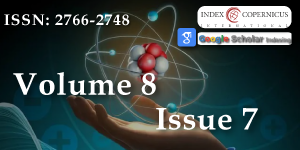Coupling Physiology
Main Article Content
Abstract
In building science, modelling human Chrono-physiology has progressed from basic two-node systems to detailed frameworks like JOS-3, which incorporate deep body and skin temperature layers to better simulate unsteady thermal states. Despite its significance, deep body temperature is paradoxically treated as a fixed set point, thereby limiting the realism of physiological simulations. Fluid-structure interaction (FSI) techniques offer insight into vascular shear stress but are constrained by computational challenges. Therefore, this study advocates for a more practical approach to human thermal analysis using coupled models that integrate computational fluid dynamics (CFD) and Chrono-physiology. Meshing complexities hinder whole-body CFD modelling, prompting the need for accessible macroscopic frameworks. Central to this research is the redefinition of “heat” in human-environment interactions. Demonstration cases evaluate vascular behavior under muscle activity using simplified equations and dimensionless heat flow metrics. By considering dynamic vessel deformation and adiabatic conditions, the study proposes a methodology for future hybrid models bridging physiology and environmental heat transport. These findings support the development of novel computational models for diverse applications, from building science to sports engineering. The proposed metrics show promise in enhancing predictive accuracy without requiring full-scale FSI computations, offering a foundational step toward three-dimensional physiological simulations.
Article Details
Copyright (c) 2025 Yamamoto T.

This work is licensed under a Creative Commons Attribution 4.0 International License.
1. Gagge AP, Fobelets AP, Berglund LG. A standard predictive index of human response to the thermal environment. ASHRAE Trans. 1986;92(1B):709–731. Available from: https://www.aivc.org/sites/default/files/airbase_2522.pdf
2. Al Assaad D, Forgiarini Rupp R, Toftum J, Breesch H, van Hooff T. Multi-segmentation of JOS-3 thermoregulation model: Validation under steady-state and transient conditions. Build Environ. 2025;270:112560. Available from: https://doi.org/10.1016/j.buildenv.2025.112560
3. Hirt CW, Nichols BD. Volume of fluid (VOF) method for the dynamics of free boundaries. J Comput Phys. 1981;39(1):201–225. Available from: https://doi.org/10.1016/0021-9991(81)90145-5
4. Pennes HH. Analysis of tissue and arterial blood temperature in the resting human forearm. J Appl Physiol. 1948;2:93–122. Available from: https://doi.org/10.1152/jappl.1998.85.1.5
5. Zhang L, Zhao Y. Revisiting heat transfer in biothermal models. J Therm Biol. 2022;78:45–57.
6. Patel R. Anisotropic conductivity in human soft tissues: Implications for bioheat modeling. IEEE Trans Biomed Eng. 2022;69(4):1120–1129.
7. Kim HS, Lee HJ. Active skin perfusion as a boundary condition in thermal comfort models. Build Environ. 2021;200:107947.
8. Thompson J, Rivera M. Homogenization of multilayer tissue models for efficient thermal simulations. Int J Heat Mass Transf. 2021;165:120649.
9. Saito M, Kato K. Circadian modulation in reduced-order biothermal models. Chronobiol Int. 2022;39(2):153–168.
10. Novak P. Mesoscopic coupling of blood flow and tissue bioheat transfer. Front Physiol. 2022;13:898134.
11. Huang Y, Wang Z. Partitioned vs. monolithic FSI-thermal coupling: Stability and convergence. Comput Methods Appl Mech Eng. 2022;389:114395.
12. Lopez J, Sun Y. Monolithic scheme for simultaneous fluid-structure and heat transfer problems. J Comput Phys. 2022;453:110824.
13. Nguyen TH, Smith J. Infrared thermography in validation of human thermal comfort models. Sensors. 2022;22(15):5732.
14. Ruiz P. Machine learning surrogates for real-time bioheat simulations in building control. Energy Build. 2022;263:112057.
15. Hussain SM, Nazar T, Shabbir MS, Qureshi MA, Eid MR, Makhdoum BM, et al. Irreversibility analysis and thermophoresis effects on electro-thermal blood flow in a diseased artery: A thermal case study. Case Stud Therm Eng. 2025;73:106691. Available from: https://doi.org/10.1016/j.csite.2025.106691
16. Giangrossi C, Ramalli A, Guidi F, Noothout E, Wei L, Vos HJ, et al. Blood-flow volume estimation by a 2-D sparse array. Ultrasound Med Biol. 2025. Available from: https://doi.org/10.1016/j.ultrasmedbio.2025.06.005
17. Shimizu Y, Irifune M, Takahashi T, Oda A, Kamio H, Imamura S, et al. Nitrous oxide increases peripheral blood flow and decreases plasma adrenaline and noradrenaline concentrations in human volunteers: An in vivo nonrandomized clinical and in vitro chromaffin cell culture study. Eur J Pharmacol. 2025;1003:177899. Available from: https://doi.org/10.1016/j.ejphar.2025.177899
18. Bertaglia G, Caleffi V, Pareschi L, Valiani A. Uncertainty quantification of viscoelastic parameters in arterial hemodynamics with the a-FSI blood flow model. J Comput Phys. 2021;430:110102. Available from: https://doi.org/10.1016/j.jcp.2020.110102
19. ANSYS. ANSYS. 2025. Available from: https://www.ansys.com/ja-jp
20. STAR-CCM+. STAR-CCM+. 2025. Available from: https://plm.sw.siemens.com/ja-JP/simcenter/fluids-thermal-simulation/star-ccm/

